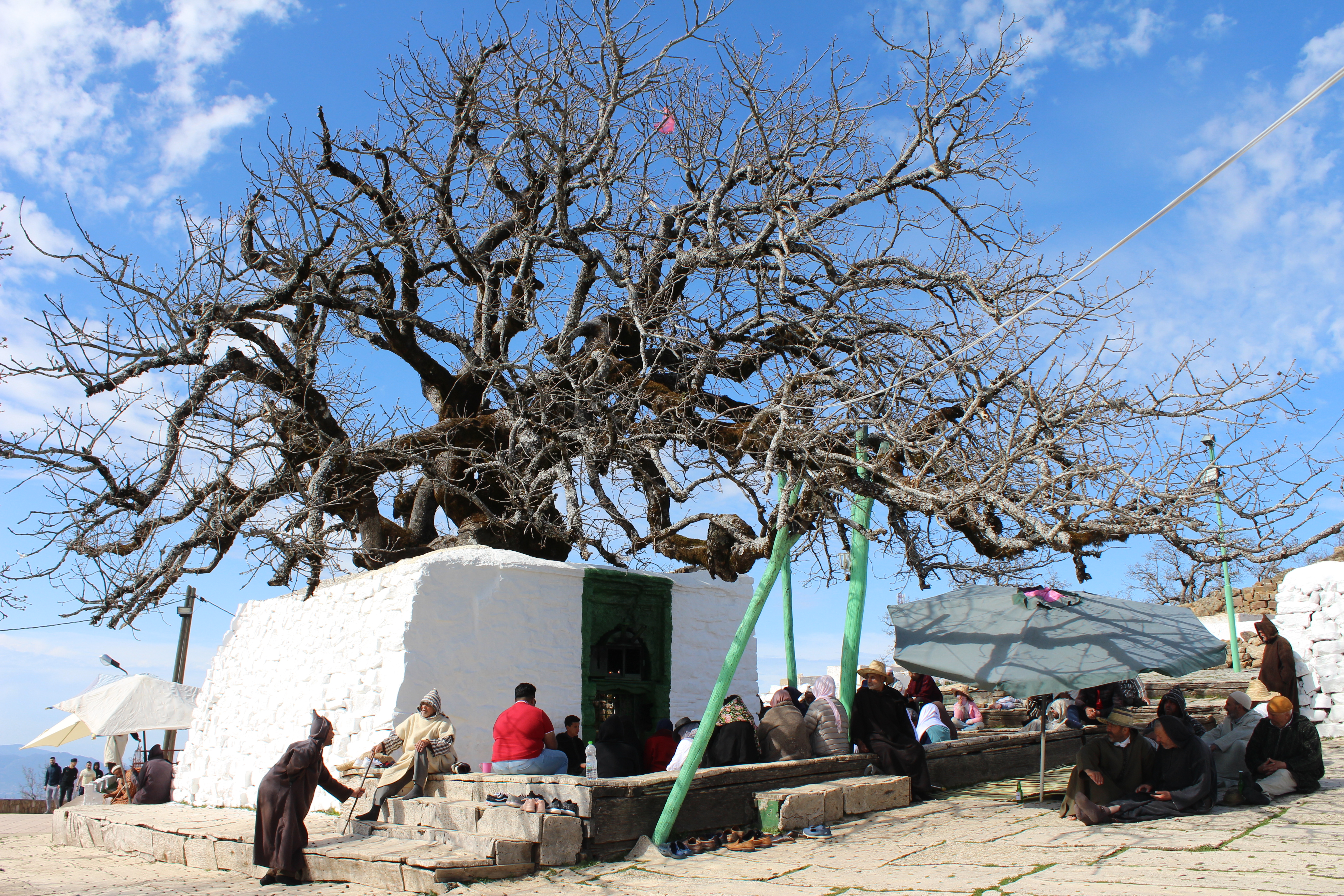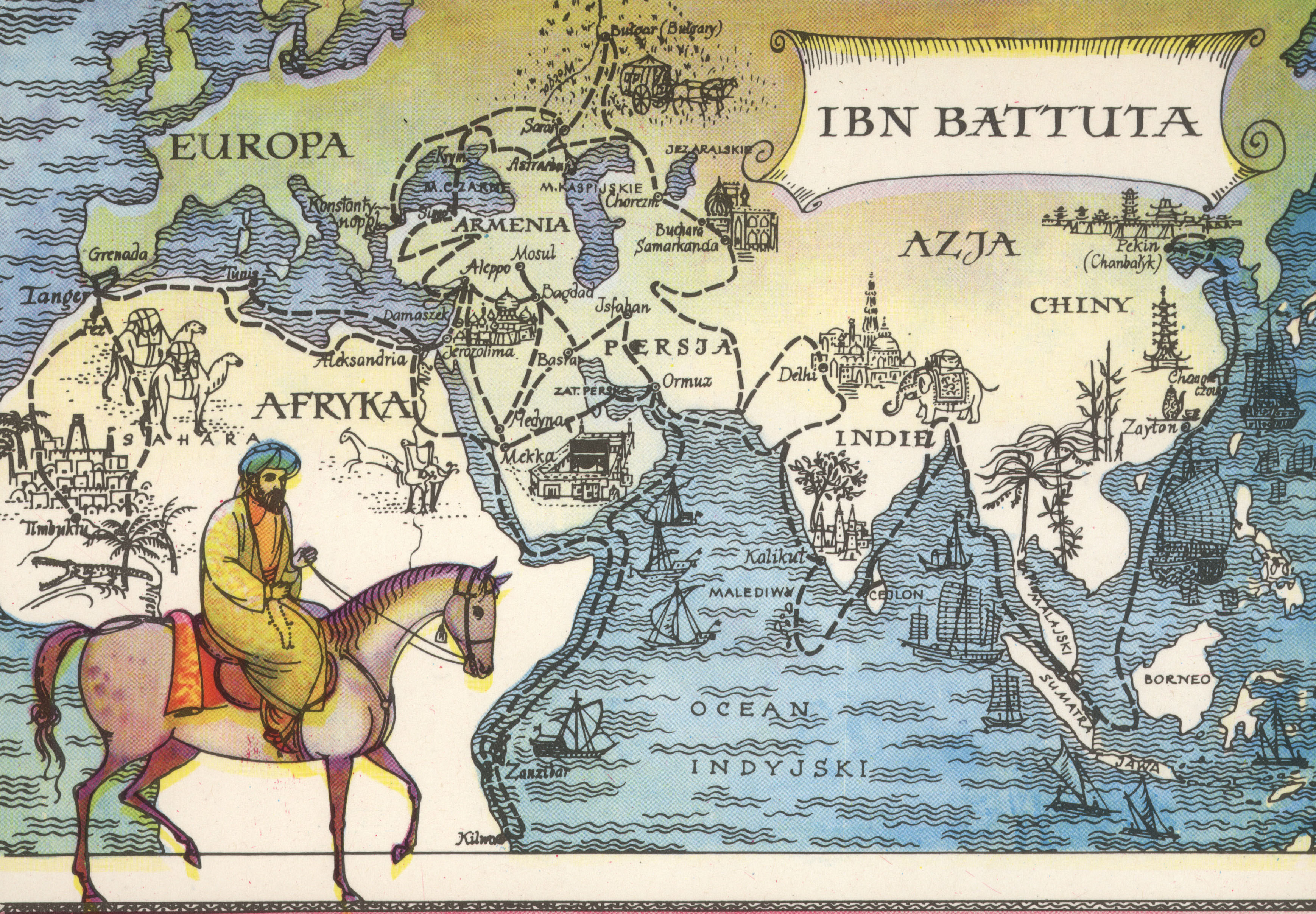The Revolution Faqih And The Scholar of All Madhhab - Sheikh Abdellah Ibn As-Siddiq Al Ghumari
Tangier is the most Northern city of Morocco and also the gateway connecting Africa to Europe via its Strait of Gibraltar. Spain is about 20 kilometres away. It has influence from the days of the Carthaginian, Roman, British, Spanish, Portuguese, French and finally the Arab forces. For the past 10 years with the current King, King Mohammad VI, massive new economic initiative and development including the mega Tangier-Med port and new industrial areas has been sprouting out since.
The old medina, the walled city within Tangier dated back 14th century. Entrance are usually by the big gate which is called a “Bab”, means “door” in Arabic. The medina has a strange density with unimaginable city design of narrow curves, alley and high wall creating a sense of hurried, lost and confined with all these intersection that connect this ancient city.
We arrived about 2 pm on the 12th of March and we proceeded to climb cobbled stone stairs, jostling with women shopping with vegetables, overflowing with meat and produce from stores and vendors selling rugs, textiles, silk, djellaba to flowers and spices. We navigate from the bustling alleyway as it slowly getting more quiet with our diligent walk, climbing each stairs with care until we are faced with a beautiful vibrant green door of the zaouia.
.jpg)
.jpg)
According to the translation work of Sheikh Abdellah Ibn As-Siddiq by Riad Nachef, an Islamic Affair site, he was born in Tangier in 1918 , died in 1993 and buried in the same zaouia as the family. His early interest was cultivated by his scholar father, Sheikh Ahmed Ibn As-Siddiq Al-Ghumari, who himself is the decendent of Al-Hasan Bin Ali Bin Abi Taleb, the grandson of Prophet Muhammad, s.a.w. The Ben Siddiq family has been renowned for the study of Hadith and Takhrij for generations.
He has an impressive Islamic studies ijazza and displays remarkable memorization skill as young as 5 years of age when he successfully memorized the Quran. With the advice of his father he set out to Fes to study, at the then mosque of Al-Karaouine under the grand scholar Abdul hayy Al Kittani, the leader of the Kattaniya Brotherhood which practice the Sufi doctrines of the established Darqawi Tariqa, which garner good support from the French colonial rule at that time. At the same time, he also tutor under Shaykh Mohammad Ibn Al Hajj in the mosque of Moulay Idriss for the study of Bukhari by Al Qastalani. Al Qastalani is a suni scholar and famous for his commentary on Sahih Al-Bukhari, which is one of thr 6 canonical hadith collections and these hadith was collected by Muhammad Ibn Ismail Al-Bukhari which is the first systematic approach to classifying the hadith and according to the Gulf Times recently Al-Bukhari’s collections are the most authentic book of hadiths. Sheikh Abdellah also studied under many distinguished scholars of the time.
On his return to Tangier, he started teaching the al ‘Ajirrumiyyah, the 13th century Arabic Grammar book, which is written in verse for easy memorization and is the foundation of the beginner’s education in Classical Arabic, in zaouia Siddiqiyyah, the current and also the same place where his father teaches. He also teaches the Risalat Al Qayrawani which is an course specially written for young children by Abu Muhammad Abdillah Ibn Abi Zayd Abd Al-Rahman Al-Nafzawi ibn Zayd Al-Qayrawani or better known as Ibn Abi Zayd (922-996). It is here he started his compilation of writings with his first elaborate explanation of the al ‘Ajirrumiyyah.
His father then decided to sent him to Cairo to further his education in the famous University of Al-Azhar which he study under the grand sufi master, Mohammad Hasanayn Makhluf Al Adawi Al Maliki, for the subject of Risalah as Samarqandiyyah Fi Adab al-Bahth Wa Al-Munadhara. Fi Adab al-Bahth Wa Al Munadhara by Shams al-Dīn Muḥammad ibn Ashraf al-Ḥusaynī al-Samarqandi (1250-1310) work are discussions on method of intellectual investigation of reasoning using the debate style. Sheikh Abdellah also studied under few other well known scholars at that time.
He also taken his father advice and study Shafi’i Fiqh which is one of the four schools of fiqh or religious law within Sunni Islam and Manhaj al-tullab (“The Way of the Students”) by the great scholar Zakariyya Al-Ansari under the tutorlage of Sheikh Mohammad Izzat. He futher read the Sharh al Kahtib or known as “Abi Shuja”, the Shafi’I fiqh with teacher Abdulmajid Ash-Sharqawi.
To further enhance his knowledge he also study the Hanafi Fiqh, Tafsir Wa Al Hidayah, the commentary of the 14th century scholar, Jamal Al Din Al Asnawi of the Al Sharh, (94 surah of the Quran with 8 ayat) and Ala Minhaj Ala Usul “The Way and The Root”. He finally obtained ijazah for all his studies in Egypt.
These are only some of his out-standing accomplishments in his pursuit of Islamic knowledge. He was consider during his lifetime by some as the Shaykh Al Islam and the Bukhari of his time.
The zaouia is not indicated by any landmark as it is a trickly navigation especially when one walks about in the ancient medina. It is easy for the visitor just to ask for the direction to Ben Siddiq mosque instead.
You can enter the zaouia by taking a few uneven cement steps and on the right side with the staircase down will be the wudu place for the men. For women it is advisable to come for prayer pre-prepared. The tomb is located slightly on the left side of the entrance and visible from the main door. The zaouia can easily accommodate about more than 60 visitors at the same time and entrances are usually free. A donation box is available for visitors that wish to make a contribution.
As with almost all Moroccan zaouia, the tomb is usually protected with a golden engraved metal cage and drape with red and green velvet cloth, design of verses from the Quran with golden embroidery thread. Moroccan influence of using the zellige for wall and floor decoration bring this Ben Siddiq zaouia about a certain serenity to the atmosphere. A big and sparkling chandelier hangs from the wooden beam of the roof emits the aura of grandeur and class. As you walk toward the inner courtyard, you will come to the mosque of Ben Siddiq. During prayer time, many of the medina residents do come to perform their prayers here.
Sheikh Abdellah Ben Siddiq the educator and against anarchy in Fiqh teaches everyone not to blindly believe in what is being said or taught but always seek evidence so that all seekers will be able to choose the correct and righteous path. As a revolution jurist, he is of the opinion that adaptation of Fiqh is a must to suit current society. His teaching of Islam on relevancy in current life and promoting intelligent application of the Hadith accurately is in line with Moroccan Kingdom’s today to promote a democratic Islam society.
.jpg)
Related Blogs

The Great Sufi Master, Be One And With One The Completeness of Spirit.
Sometimes, I wonder, why so many Sufi scholars and Saints find their way to this little country at the corner of Africa. Again why do these famous Saints choose a challenging location, tiny little town, hard to find villages to call their home?...
Read More
See With Your Heart, A Visit to Morocco Mecca – Moulay Idriss Zerhoun
Before 2005, non Muslim are not permitted to stay overnight in Moulay Idriss. This town has a deep history dated back to 789, Moulay Idriss el Akhbar, the great grandson of Phophet Muhammad came and bring along the teaching of Islam...
Read More
Morocco Great Explorer - Ibn Battuta
There are many famous and great world explorers between 13th and 14 century. From Italy, Marco Polo (1254-1324), Portugal, Afonsol Albuquerque (1454-1515), China, Zheng He (1371-1434) and Morocco, Ibn Batuta...
Read More